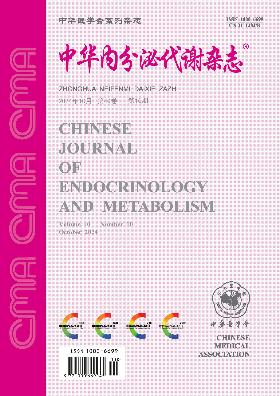Endothelial FGFR1 deficiency induces AcSDKP-resistant EndMT by regulating TGFβ signal pathway
Q4 Medicine
引用次数: 0
Abstract
Objective To investigate the role of fibroblast growth factor receptor(FGFR) 1 in endothelial to-mesenchymal transition(EndMT) and epithelial-to-mesenchymal transition(EMT), and to find out a new strategy to study the vascular endothelial function of diabetic renal fibrosis. Methods Culture media from FRS2 knockdown HMVECs was transferred to HK-2 cells. Western blot and immunofluorescence staining were used to measure EMT markers and key moleculars of transforming growth factor(TGFβ). Results It was found that the medium from FRS2 siRNA-transfected HMVECs reduced E-cadherin protein levels, increased EMT markers levels, and activated TGFβ signal pathway in HK-2 cells. Conclusion Endothelial FGFR1 deficiency-induced EndMT leads to EMT in neighboring cells in a manner dependent on TGFβ1 signaling. Endothelial cell FGFR1 is an important molecule for maintaining endothelial homeostasis and epithelial homeostasis, and seems to be a key target for anti-diabetic renal fibrosis. Key words: Fibroblast growth factor receptor 1; Endothelial-to-mesenchymal transition; Epithelial-to-mesenchymal transition; Diabetic nephropathies内皮FGFR1缺乏通过调节TGFβ信号通路诱导AcSDKP抗性EndMT
目的探讨成纤维细胞生长因子受体(FGFR)1在内皮-间质转化(EndMT)和上皮-间质转换(EMT)中的作用,为研究糖尿病肾纤维化的血管内皮功能提供新的策略。方法将FRS2敲低HMVECs的培养基转移到HK-2细胞上。采用蛋白质印迹和免疫荧光染色法检测EMT标记物和转化生长因子(TGFβ)的关键分子。结果FRS2 siRNA转染HMVECs的培养基降低了HK-2细胞中E-钙粘蛋白的水平,增加了EMT标记物的水平,并激活了TGFβ信号通路。结论内皮细胞FGFR1缺乏诱导的EndMT导致邻近细胞的EMT,其方式依赖于TGFβ1信号传导。内皮细胞FGFR1是维持内皮稳态和上皮稳态的重要分子,似乎是抗糖尿病肾纤维化的关键靶点。关键词:成纤维细胞生长因子受体1;内皮细胞向间充质转化;上皮-间充质转化;糖尿病肾病
本文章由计算机程序翻译,如有差异,请以英文原文为准。
求助全文
约1分钟内获得全文
求助全文
来源期刊

中华内分泌代谢杂志
Medicine-Endocrinology, Diabetes and Metabolism
CiteScore
0.60
自引率
0.00%
发文量
7243
期刊介绍:
The Chinese Journal of Endocrinology and Metabolism was founded in July 1985. It is a senior academic journal in the field of endocrinology and metabolism sponsored by the Chinese Medical Association. The journal aims to be the "Chinese broadcaster of new knowledge on endocrinology and metabolism worldwide". It reports leading scientific research results and clinical diagnosis and treatment experience in endocrinology and metabolism and related fields, as well as basic theoretical research that has a guiding role in endocrinology and metabolism clinics and is closely integrated with clinics. The journal is a core journal of Chinese science and technology (a statistical source journal of Chinese science and technology papers), and is included in Chinese and foreign statistical source journal databases such as the Chinese Science and Technology Papers and Citation Database, Chemical Abstracts, and Scopus.
 求助内容:
求助内容: 应助结果提醒方式:
应助结果提醒方式:


